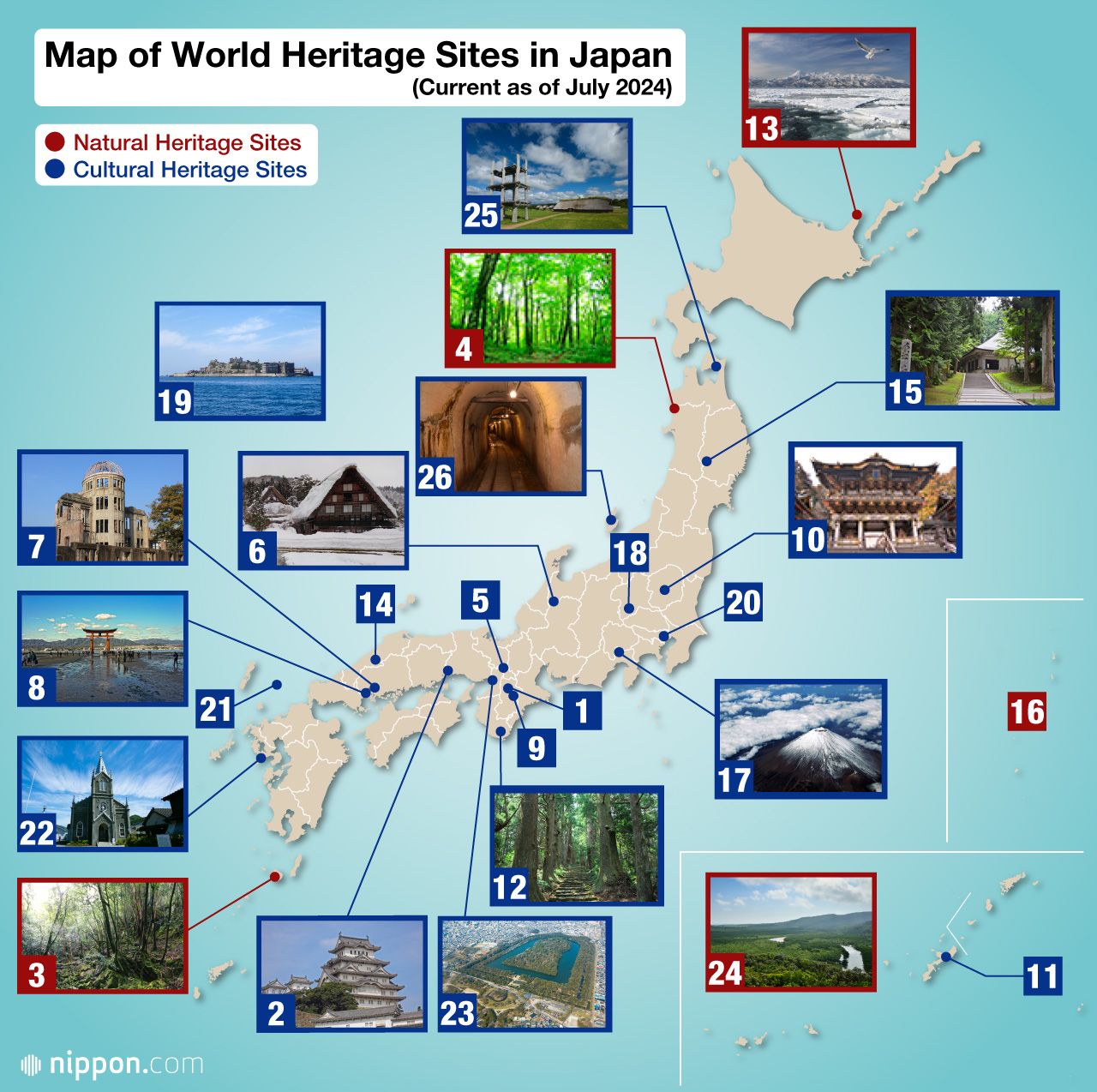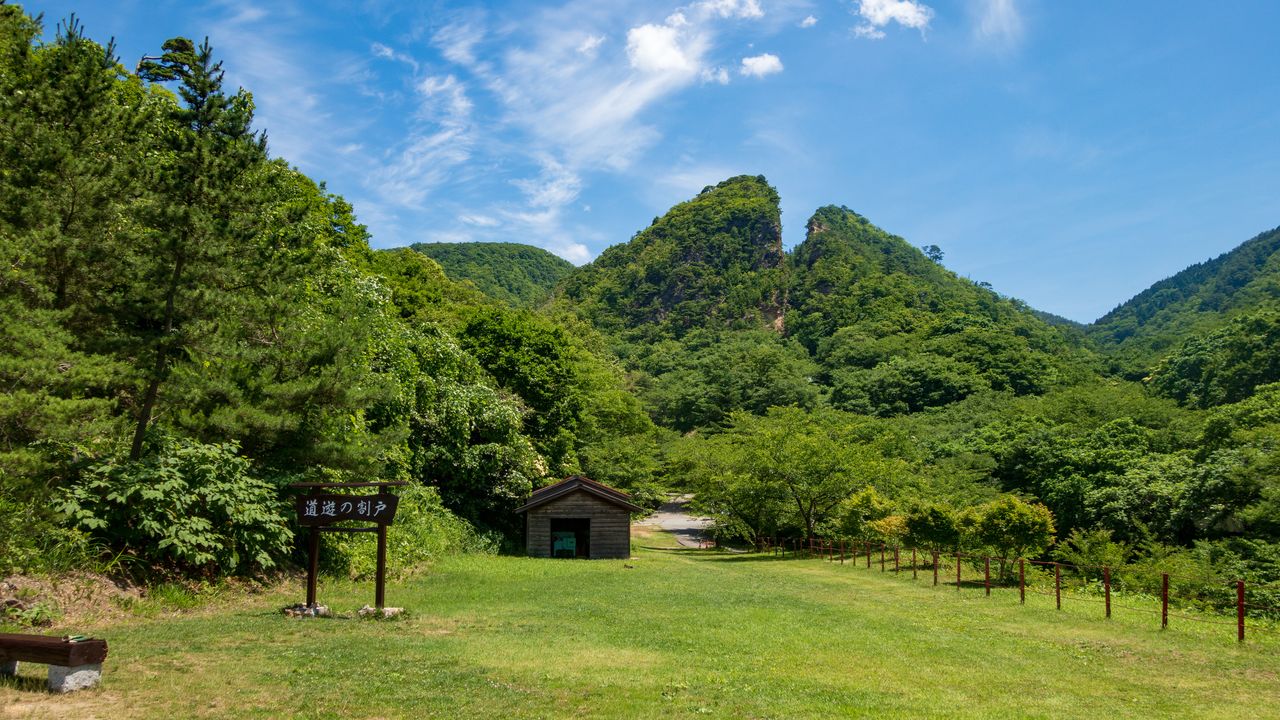
Sado Gold Mines Added to UNESCO List: World Heritage Sites in Japan
Guide to Japan History Culture- English
- 日本語
- 简体字
- 繁體字
- Français
- Español
- العربية
- Русский
Mining Heritage
On July 27, 2024, at a meeting of the World Heritage Committee of UNESCO in New Delhi, India, the Sado Island Gold Mines were added to the World Heritage list.
The site on the island of Sado in Niigata Prefecture is a huge complex consisting of the Nishimikawa placer gold mine and Aikawa-Tsurushi gold and silver mine, with four centuries of history until operations ended in 1989. The Aikawa mine is also commonly known as Sado Kinzan, and is a major tourist draw.
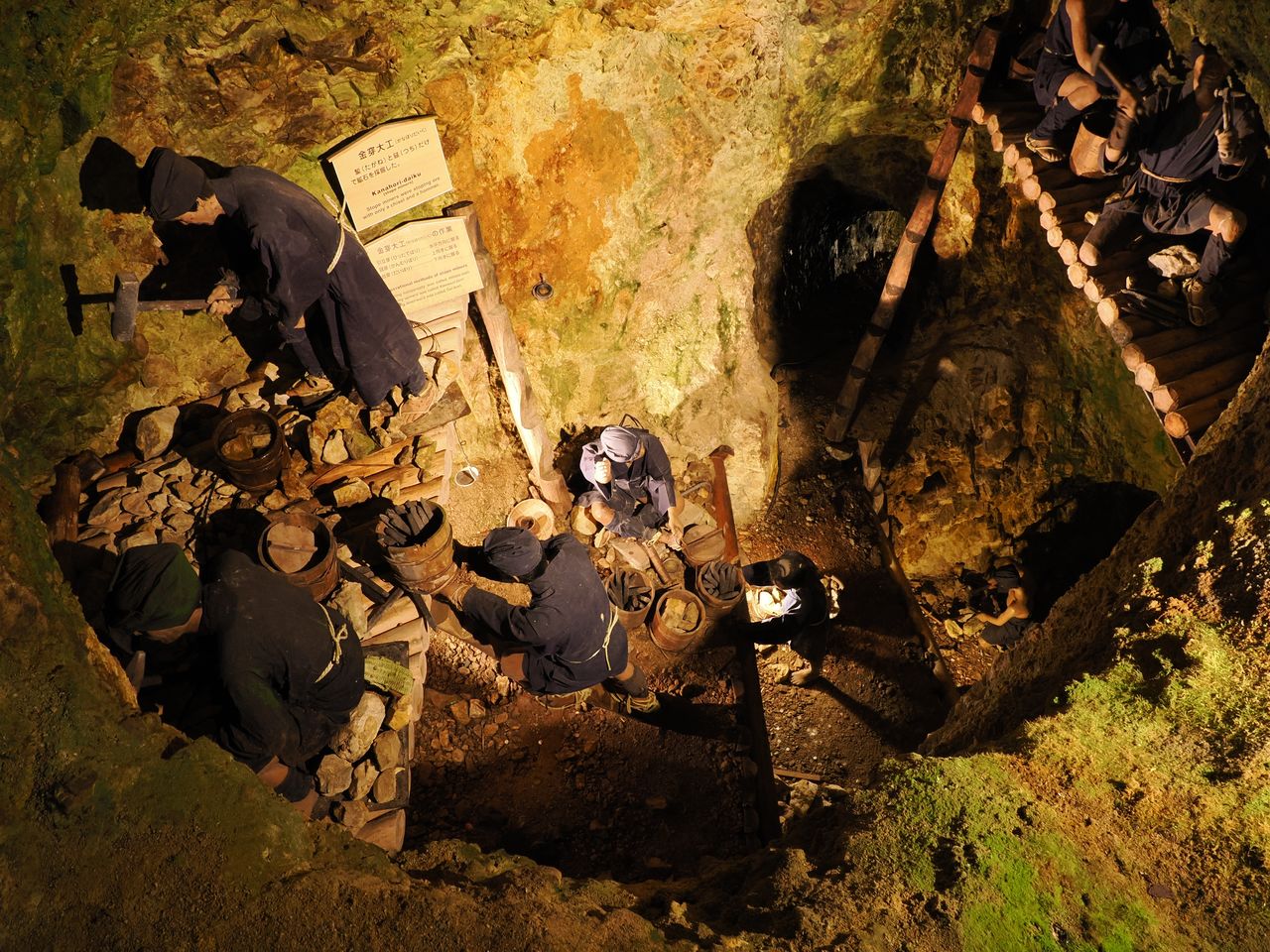
A reconstruction of gold mining operations at the Sōdayū mine, Sado Kinzan. (© Pixta)
The government initially recommended the mining complex in 2022, targeting registration on the heritage list in 2023. However, UNESCO officials found that the documentation was insufficient, and the government changed its proposal before resubmitting in January 2023.
In June 2024, the UNESCO advisory body the International Council on Monuments and Sites requested additional information. It recommended that Japan remove sites developed after the end of the Edo period in 1868 from the proposal and establish facilities for introducing the complete history of the mines, including during World War II.
South Korea had opposed the registration of the site as world heritage due to the wartime forced labor of workers from the Korean peninsula. However, as Japan followed the ICOMOS recommendations, South Korea ultimately approved registration.
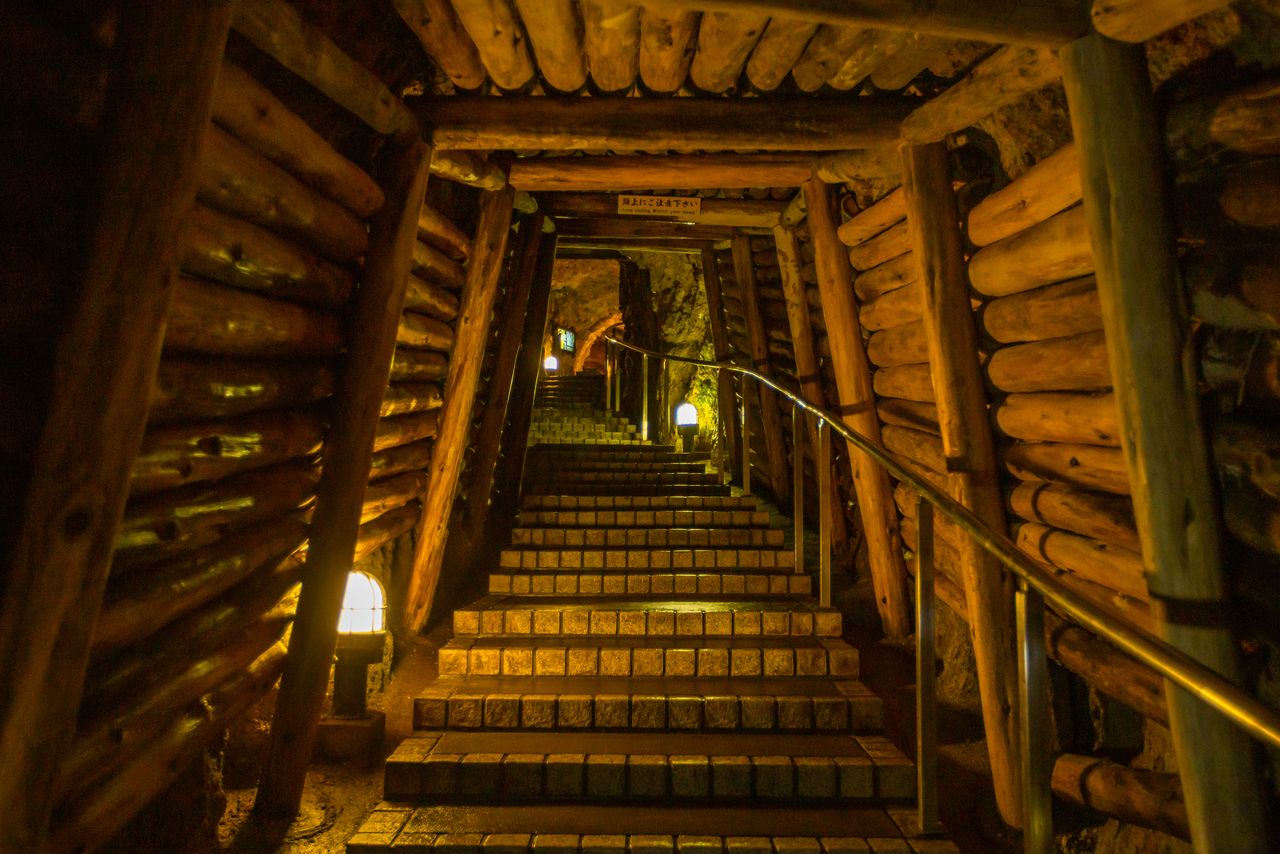
Inside the Sōdayū mine at Sado Kinzan. (© Pixta)
The Sado mines are Japan’s twenty-first cultural World Heritage site, registered three years after Jōmon Prehistoric Sites in Northern Japan in 2021. Including natural heritage sites, there are 26 World Heritage sites in Japan.
Although removed from the proposal, the twentieth-century Kitazawa Flotation Plant is another notable representative of mining on Sado. Built to process gold ore, it ceased operations in 1952. Now covered by weeds and ivy, the structure has a dreamlike atmosphere reminiscent of the Studio Ghibli movie Castle in the Sky.
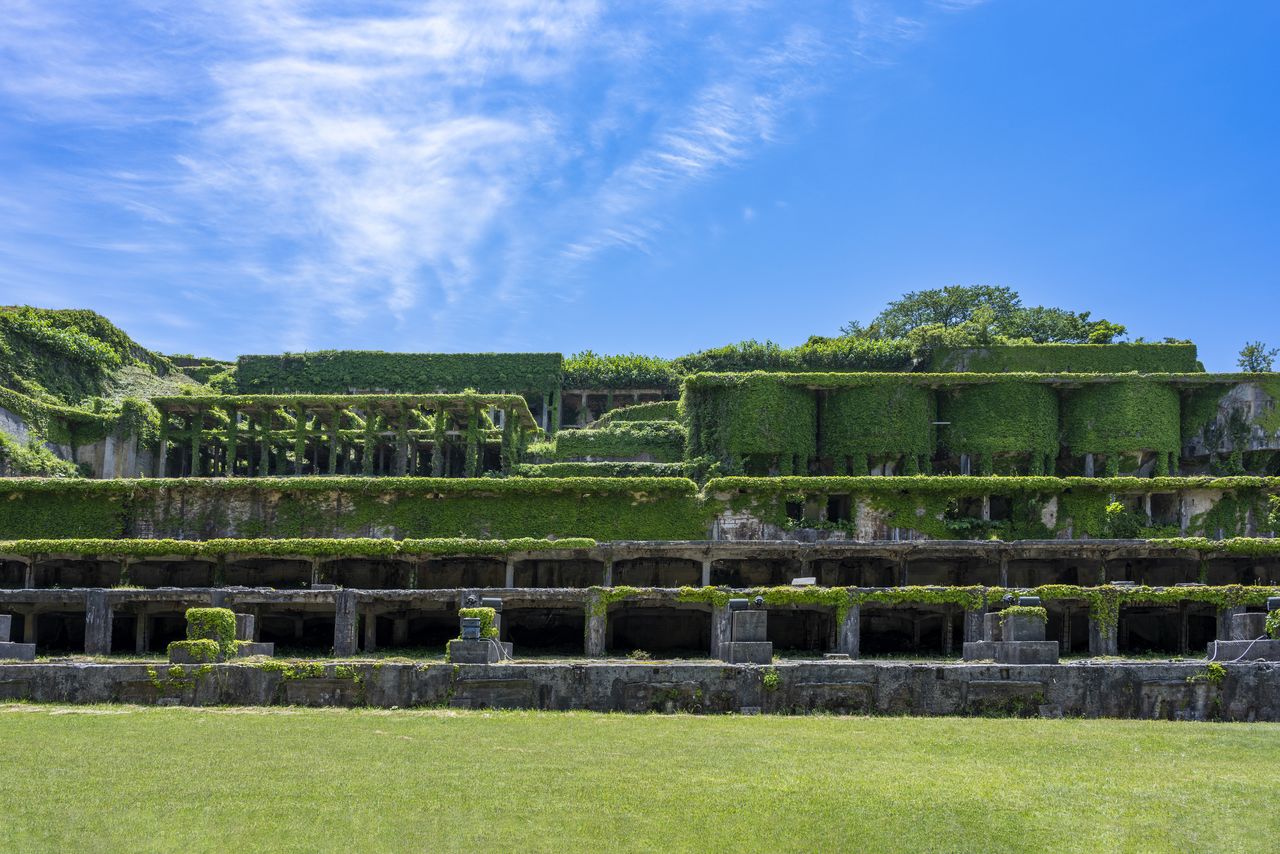
Kitazawa Flotation Plant has become a popular tourist spot known as Sado’s Laputa, in reference to the Ghibli movie. (© Pixta)
World Heritage Sites in Japan
| Site (Prefectures) | Year Listed | |
|---|---|---|
| 1 | Buddhist Monuments in the Hōryūji Temple Area (Nara) | December 1993 |
| 2 | Himeji-jō Castle (Hyōgo) | December 1993 |
| 3 | Yakushima (Kagoshima) (natural heritage) | December 1993 |
| 4 | Shirakami-Sanchi (Aomori and Akita) (natural heritage) | December 1993 |
| 5 | Historic Monuments of Ancient Kyoto (Kyoto and Shiga) | December 1994 |
| 6 | The Historic Villages of Shirakawa-gō and Gokayama (Gifu and Toyama) | December 1995 |
| 7 | Hiroshima Peace Memorial (Hiroshima) | December 1996 |
| 8 | Itsukushima Shintō Shrine (Hiroshima) | December 1996 |
| 9 | The Historic Monuments of Ancient Nara (Nara) | December 1998 |
| 10 | The Shrines and Temples of Nikkō (Tochigi) | December 1999 |
| 11 | Gusuku Sites and Related Properties of the Kingdom of Ryūkyū (Okinawa) | December 2000 |
| 12 | Sacred Sites and Pilgrimage Routes in the Kii Mountain Range (Nara, Wakayama, and Mie) | July 2004 |
| 13 | Shiretoko (Hokkaidō) (natural heritage) | July 2005 |
| 14 | Iwami Ginzan Silver Mine (Shimane) | June 2007 |
| 15 | Hiraizumi—Temples, Gardens, and Archaeological Sites (Iwate) | June 2011 |
| 16 | Ogasawara Islands (Tokyo) (natural heritage) | June 2011 |
| 17 | Fujisan—Sacred Place and Source of Artistic Inspiration (Yamanashi and Shizuoka) | June 2013 |
| 18 | Tomioka Silk Mill and Related Sites (Gunma) | June 2014 |
| 19 | Sites of Japan’s Meiji Industrial Revolution: Iron and Steel, Shipbuilding and Coal Mining (Fukuoka, Saga, Nagasaki, Kumamoto, Kagoshima, Yamaguchi, Iwate, and Shizuoka) | July 2015 |
| 20 | The Architectural Work of Le Corbusier, an Outstanding Contribution to the Modern Movement (National Museum of Western Art; Tokyo) | July 2016 |
| 21 | Sacred Island of Okinoshima and Associated Sites in the Munakata Region (Fukuoka) | July 2017 |
| 22 | Hidden Christian Sites in the Nagasaki Region (Nagasaki and Kumamoto) | June 2018 |
| 23 | Mozu-Furuichi Kofun Group: Mounded Tombs of Ancient Japan (Osaka) | July 2019 |
| 24 | Amami-Ōshima Island, Tokunoshima Island, Northern Part of Okinawa Island, and Iriomote Island (Kagoshima and Okinawa) (natural heritage) | July 2021 |
| 25 | Jōmon Prehistoric Sites in Northern Japan (Hokkaidō, Aomori, Iwate, Akita) | July 2021 |
| 26 | Sado Island Gold Mines (Niigata Prefecture) | July 2024 |
(Originally published in Japanese. Banner photo: Dōyū no warito, a mountain split by mining activities, is a symbol of gold mining on Sado. © Pixta.)

